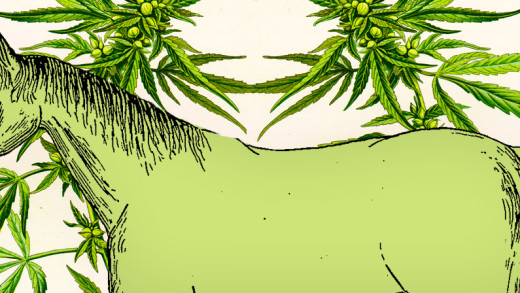Who’s Waldo? The early history of Martin Handford’s Waldo
Martin Handford’s iconic creation has gone from books, to television, to Halloween costumes in the real world. But who is Waldo?
It turns out there’s a lot to learn from his birth: where he came from, how he got his name, and how his personality has changed. You’ll never look at Waldo the same way again.
An insurance clerk hides in the crowd
Waldo’s insane crowds were the product of an insurance clerk’s obsession.
Since he was five years old, British illustrator Martin Handford was drawing large crowds of stick figures on a single page, and as his drawing talent progressed, so did his obsession with complexity and humor. “I needed to get things accurate from a very early age,” he told the London Times. “If I enacted battles, then I had to have all the soldiers in the right places.” He even continued playing with the soldiers as an adult. Crowded movies were another fantastic piece of chaos.
“All the things that entertained me seemed to touch on each other,” he said. “I became obsessed by films like Errol Flynn’s Adventures of Robin Hood. It was about this time that The Alamo came out. I can’t remember quite how many times I saw it. It was, and is, an episode in history that combines all the elements that most excite me; battles with enormous colour and movement, great heroism on the part of the main characters.” His favorite book, he told the LA Times, The Golden History of the World, was an inspiration too.
After high school, he studied at Maidstone Art College for three years (he was in a punk band), but he didn’t make it into a post-grad course at the Royal College. He turned to more inconspicuous work.
“I suppose insurance clerk would be the generic description,” he said. He was a clerk at the offices of the Guardian Royal Exchange and worked on illustration in his free time. His work was largely lost in the crowd until the perfect publisher found him.
A former circus clown helps make Wally happen
If you didn’t know, the American Waldo was first published as Wally in the UK. Walker Books was headed by David Lloyd, a former circus clown (name: Mr. Turkey Sandwich) who occasionally wore quirky hats around the office. In the mid-eighties, he was looking for something new for the children’s book company.
David Bennett, also of Walker, said the company was searching for something in the style of French illustrator Philippe Dupasquier, whose Busy Place series featured dense crowds. Bennett remembered Handford’s work from an illustrators’ manual and gave him a call. Handford suggested his obsession: crowd scenes.
Handford handed in a book packed with the dense, funny illustrations that people around the world have come to love. But there was something missing. Donna Casanova, another Walker employee, said that a random brainstorm birthed Wally.
The company was getting ready for Bologna Book Fair and, just a week or so before, someone – several laid claim to being the ‘someone’ – said, ‘Wouldn’t it be good if you were looking for an individual within that crowd scene, rather than just looking at a crowd?’ Everybody thought there was something in that. David Bennett went back to Martin and floated this idea with him. He ran with it, and so Wally was born. In a very short space of time he illustrated two spreads that they showed in Bologna. Within 24 hours there was a huge crowd of people standing round looking for Wally.
Making Wally happen
“I didn’t want a character who was ultracool.”Wally’s invention started an empire, and Handford used unique methods to get there. His publishers called him a “shy and creative genius who’s very dedicated to his work.”
Wally’s clothing was born out of necessity, not a love for striped shirts. “There was no other significance in the clothing I gave him,” Handford told the Orlando Sentinel in 1993. “A stripe-y top is quite eye-catching. The jeans, ordinary. Extras that would reinforce his appearance.”
”I didn’t want a character who was ultracool,” he told EW in 1990, when he himself was dressed in very bright clothing.
He drew each picture to the same scale as in the books, packing more figures in each book, which took about six to eight weeks per scene. Starting with black and white outlines, he went from left to right on the page as he zoned out with old movies and music. Originally his routine involved being surrounded by books, comics, and toy soldiers while he slaved over the books. Working from 2PM to 6AM, he drew away until each book was complete, killing time by listening to the Bee Gees, the Clash, or old tapes of Sergeant Bilko. That eccentric process produced a global phenomenon.
How Wally and Waldo got their names
As Wally traveled around the world, he got new names. He’s called Ubaldo (Italy), Charlie (France) Govert (Holland), Aref (Egypt), Walter (Germany), and many other names that fit his vaguely nerdy personality. But the two most famous names, Wally and Waldo, have more complex origins.
Wally’s name came from his original depiction as a bit of a bumbler. “In England in the 1980s, there was a certain kind of character called a train spotter, someone slightly nerdy, a bit idiotic,” Handford told the Dallas Morning News on Wally’s tenth birthday. It matched Wally’s lost personality perfectly.
“In England,” Handford told the New York Times in 1990, “if someone says something silly or looks slightly foolish, he is called a Wally. He is a little goofy, but well-meaning.”
So where did Waldo come from? It wasn’t just a random replacement for Wally—it was a publisher’s strange personal preference. The name Wally reminded John Keller at Little Brown of Wallis Simpson, the woman King Edward VIII married, so he threw Waldo into the mix.
Whatever the reason, Waldo was born, but he wasn’t done evolving. His personality changed as he grew.
Waldo grows up—with a franchise and an author
“I see him as completely different now.”Wally has showed up in 26 languages and sold well over 75 million books, thanks to the tireless work of an author who once called Wally “my life.” He’s been banned in schools and cameoed in movies. But as Wally’s become a hit, he’s grown up a little too.
“He has a very good nature, and he’s fascinated with everything. He doesn’t judge anything. He watches and takes it in,” Handford told The Guardian. “It could just be his imagination. He could be just traveling there in his mind.”
Could it be that as Handford grew up, Wally did too? “At this moment, I’m not maniacally working as much as I used to because I have my family to attend to,” Handford said in 1997. For the record, he’s always bristled at being compared to Wally, but Wally’s found some stability as he gets into his late twenties.
“From the personality point of view, I see him as completely different now,” Handford explained. “As far as I’m concerned, he’s not idiotic. He is a cool guy. He knows where he’s going. He’s very open-minded. He’s kind. From a visual point of view, his face has actually changed to make him look less nerdy.”
Maybe you’ll see it the next time you find Wally—if you get lucky.







